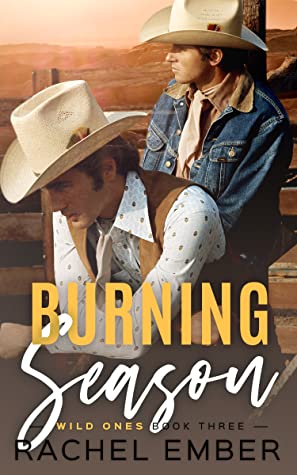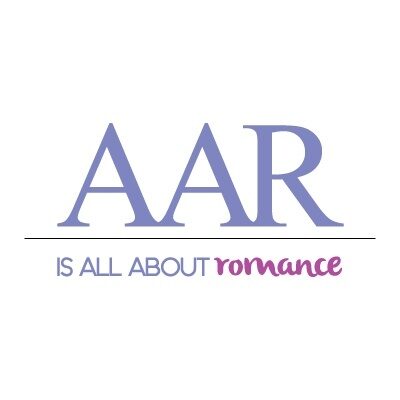
TEST
I’ve categorised Rachel Ember’s Burning Season as an historical romance – although it feels utterly weird to use the word ‘historical’ to describe a story that takes place during my lifetime! Set in 1972 (when I was eight!) it’s the third published book in the author’s Wild Ones series, but is the first chronologically; I believe the two leads appear as secondary characters in the first two books (which I have yet to read) but it works perfectly well as a standalone. Burning Season is a quiet, uplifting story about being brave and being yourself, with a sweet and sensual romance of at its centre.
Bronc rider Dylan Chase is nineteen and while he’s pretty sure he’s queer, he hasn’t ever had the chance to explore his sexuality. While away from home on a trip to Texas to take part in the rodeo, he decides to visit a club he’s heard about, a club for men who ‘like’ men – but he gets part of the way there and loses his nerve. On the drive back to his motel, he picks up a hitchhiker, Bo Bailey, who is headed to the rodeo to try to find a job. There’s an immediate frisson of attraction between them, which leads to some steamy, stolen moments that bring both revelation and sorrow. Dylan has never been with a guy, but the connection he feels with Bo – and the sex – is like nothing he’d imagined. But they’re unlikely to ever meet again.
Fate, however, has other ideas. Dylan and his friend Glen are about to depart to head back to Nebraska and home when Glen realises he’s lost his wallet and decides to go back to the rodeo grounds to see if anyone has found it. Waiting for Glen in the truck, Dylan dozes off, only to awaken once they start moving again – and to discover they’ve picked up a familiar passenger. It turns out Bo found Glen’s wallet and was already asking around to find who it belonged to so he could return it; he and Glen got chatting and Glen offered Bo some temporary work on his dad’s ranch, which borders the one owned by Dylan’s family.
The thought of being able to spend time with Bo produces a mixture of fear and elation in Dylan. Being gay in 1972 isn’t illegal, but in the sort of conservative, close-knit community Dylan comes from, it’s not acceptable and coming out would certainly make life difficult and could even put him at risk. Dylan doesn’t want anyone to know the truth about him – and Bo makes it clear he has no intention of saying anything to anyone – but Dylan also can’t help being excited at the thought of being around Bo for longer and maybe getting to do … more of what they’d done the night they met.
The romance between Dylan and Bo is a sweet slow-burn with lots of well-written longing and sexual tension, and I enjoyed watching the pair get to know each other and their relationship transition from heady infatuation and sexual exploration to love over the following weeks. Bo is, perhaps, wise beyond his years, but I liked his combination of calm and fierceness; he’s very laid back in many ways, but is no pushover and firmly believes that there’s nothing at all unnatural in his attraction to men (this is 1972, remember) and in his desire to do whatever is best for Dylan – even if it means not being able to be with him openly. There’s a strong emotional connection and plenty of chemistry between them, although as the story is told almost entirely through Dylan’s PoV*, Bo does remain somewhat enigmatic throughout. But this is really Dylan’s story and the author does a great job presenting him as a complex, rounded character who is torn between loyalty to his family and the life he’s always believed he’d have (and resigned himself to) and the sudden and new prospect of living a different, more honest and open one with someone he loves at his side.
The family dynamics are well-done, too, the loving, tight-knit, multi-generational family unit containing the sorts of fault-lines and conflicts that we can all relate to, and the author’s gift for evocative description shines through as she paints a detailed picture of the landscapes and the day-to-day life of the folks on a ranch. In fact the only part of the setting I can fault is the chronological one; apart from the absence of mobile phones and computers, there’s nothing that really screams “1972” to me – although I freely admit that, as a non-American, and someone completely unfamiliar with how ranchers and cowboys live, there may well have been indicators I missed.
The secondary cast, from Dylan’s dictatorial grandfather (whose machinations and manipulations are a large reason for those conflicts and fault-lines I mentioned) to his exasperated and grouchy brother Rob and best friend Glen, is well-drawn and adds richness to the story, and while there is period-appropriate homophobia, it’ mostly implied, which makes it more impactful when it happens (briefly) on the page.
The epilogue set fifty years in the future (i.e, now) is cute, as we check in with a much older Bo and Dylan, and also acts as a teaser for the next book in the series, so there’s a little bit of a cliffie, but it’s not one that will affect your enjoyment of the story.
This isn’t Rachel Ember’s first published book, but she’s a new-to-me author and definitely one whose work I intend to read more of. Burning Season is a beautifully written, charming and poignant love story featuring engaging, well-drawn characters and a skilfully realised setting. I’m happy to recommend it.
* The prologue – which details the initial meeting between Bo and Dylan -is told from Bo’s perspective and was originally released as the novella Sweat, Leather and Lipstick.
Buy it at Amazon or your local independent retailer
Visit our Amazon Storefront
Grade: B
Book Type: Historical Romance
Sensuality: Warm
Review Date: 22/12/21
Publication Date: 09/2021
Recent Comments …
Yep
This sounds delightful! I’m grabbing it, thanks
excellent book: interesting, funny dialogs, deep understanding of each character, interesting secondary characters, and also sexy.
I don’t think anyone expects you to post UK prices – it’s just a shame that such a great sale…
I’m sorry about that. We don’t have any way to post British prices as an American based site.
I have several of her books on my TBR and after reading this am moving them up the pile.






Oh my gosh. My pre-adult years are now considered historical stories. I was 17 in 1972, about to start my last year of high school. I’m not surprised the 1972 background isn’t super strong. In rural America, especially ranching and farming, wouldn’t have changed a lot,especially since this is before the influx of technology. The clothing would have been pretty standard for ranch work, not the latest fashions.The only things that jump out would be references to political or world events, and mentions of prominent moustaches and sideburns, which were (unfortunately in my opinion) very popular then.
I thought that might be the case – I didn’t feel there was anything different here to the books I’ve read set on modern-day ranches.
I don’t recall any porn ‘staches although Bo is described as having a beard, which didn’t seem very 70s.
It really is weird to consider the 70s as ‘historical’. Gawd, I feel old …
I realize I would be surprised if there wasn’t a reference to the Vietnam War at this point in time in America, especially if the story deal with men between 18 and 35. You’d expect some of them at least to have already served. The draft was a birthday lottery at that point, but it didn’t end completely until 1973. (We hovered around the TV in 1971 watching the draft lottery because my brother turned 18 that year. Thankfully for us, his birthday was far down the list and he wasn’t drafted.)
P.S. Protesting the Vietnam War was my first exposure to “activism,” albeit a pretty tame one. There weren’t any big protests around us, but my Mom was a member of Another Mother for Peace and we had yard signs and bumper stickers and meetings at our house.
That’s a good point. I honestly can’t remember if the war is mentioned – so I just searched the book for “Vietnam” and “war” and the former doesn’t appear at all, and the second appears twice but in different contexts.